Apple AirPods Pro (2nd generation) review: It all adds up
Apple AirPods Pro (2nd generation)
The Apple AirPods Pro (2nd generation) offer mostly incremental updates from the first-gen AirPods Pro, but they add up to make these buds worthy successors — especially for iPhone users.
The first-generation AirPods Pro made a big splash as Apple’s flagship true wireless buds of choice. With such giant shoulders to stand on, the Apple AirPods Pro (2nd generation) perhaps understandably don’t make too many changes to a wildly successful formula. With claims of improved active noise-cancelling (ANC), better battery life, and upgraded sound quality, these buds promise incremental yet impactful enhancements, all while sticking with a familiar look.
Do the AirPods Pro (2nd generation) make enough improvements to be worthy successors?
Who are the AirPods Pro (2nd generation) for?
- iPhone users get the full AirPods Pro (2nd generation) experience, including support for Find My, Personalized Spatial Audio, optimized battery life, and more.
What’s it like to use Apple AirPods Pro (2nd generation)?
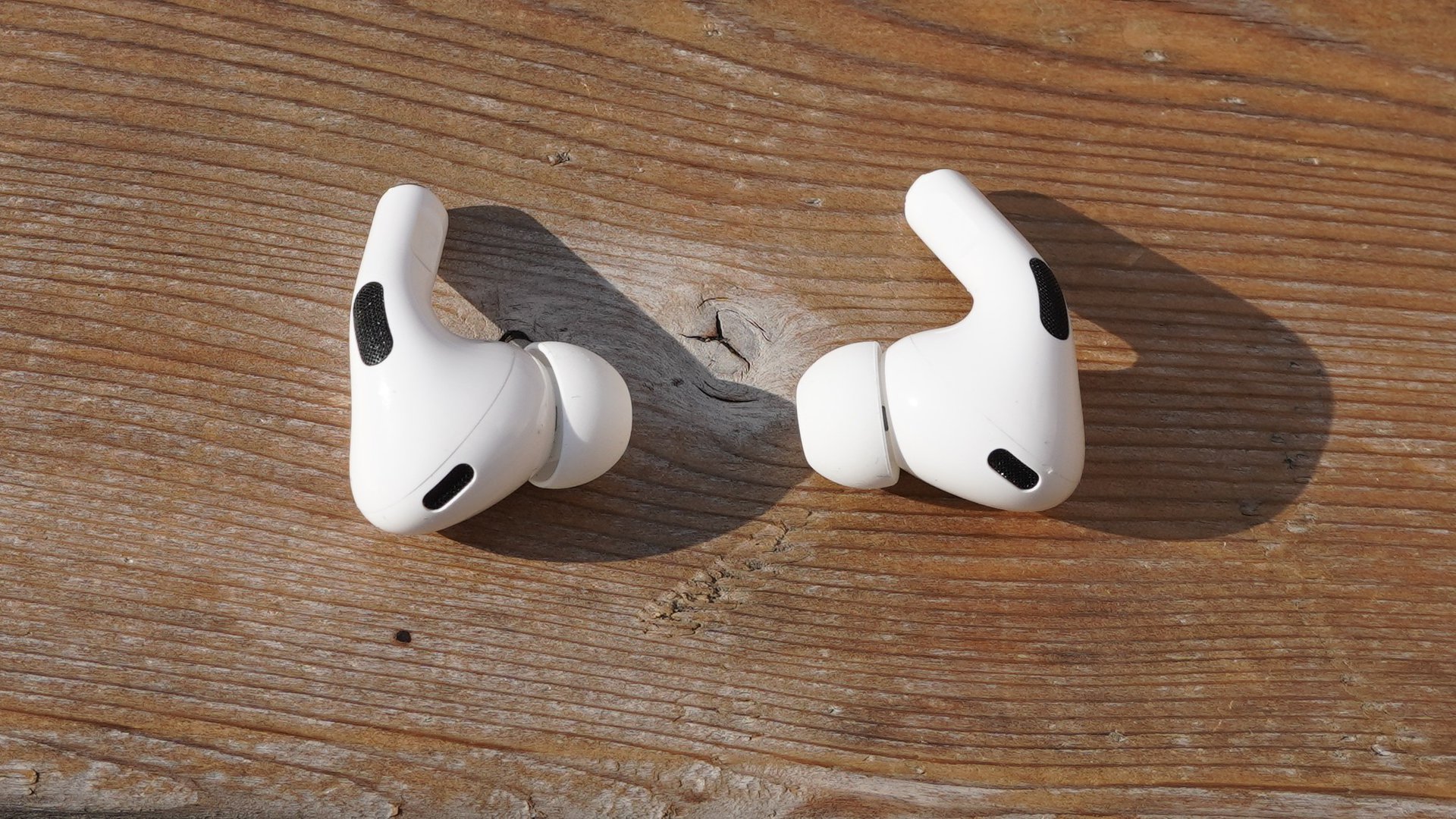
Zak Khan / Android Authority
Though the first and second-generation AirPods Pro earbuds look nearly identical, there are minor differences.
The AirPods Pro (2nd generation) include new extra small ear tips along with the usual small, medium, and large tips. If you have narrow ear canal openings, this will be a boon for comfort and isolation.
The charging case also looks similar to the first-generation AirPods Pro’s case, but it too has some changes. Both the earbuds and the case now have an IPX4 rating. That means splashes, drips, and even light rain shouldn’t be a concern. You’ll also find a lanyard loop in the box to attach the case to a belt or bag. Finally, a speaker on the case can emit a sound to help you find it and emit tones once Bluetooth pairing is complete or the battery is low.
Apple didn’t drastically change the design of the AirPods Pro (2nd generation), but there are some slight tweaks.
You won’t notice major changes when using these earphones daily, either. The AirPods Pro (2nd generation) have the same stemmed design as the first-gen AirPods Pro. They can sometimes catch on hair, masks, and other items, but that’s a minor annoyance with almost all stemmed earbuds.
Overall there aren’t any drastic design differences between the first- and second-generation AirPods Pro, which is fine. Apple didn’t need to reinvent the wheel here.
How do you control Apple AirPods Pro (2nd generation)?
Another small upgrade to the AirPods Pro (2nd generation) comes in the form of swipe controls. The first-generation AirPods Pro let you tap and squeeze the buds, but that’s it. With the introduction of swipe controls on the second-gen AirPods Pro, you can now adjust the volume without reaching for your phone or asking Siri. Many other earbuds like the Nothing Ear 1 already do this, but this is a welcome update nonetheless.
Besides that, you’ll find the standard set of controls we’ve come to expect from AirPods:
| INPUT (stems) | ACTION |
|---|---|
|
One press |
Play/pause/answer call |
|
Two presses |
Next track |
|
Three presses |
Previous track |
|
Press and hold |
Toggle ANC/Adaptive Transparency modes |
|
Swipe up/down |
Increase/decrease volume |
|
“Hey Siri” |
Change volume, request directions, playback control, receive messages, and more |
Additionally, you can take advantage of the AirPods Pro (2nd generation) automatic play/pause feature. Taking the earbuds out will automatically stop playback, and inserting them again will resume playback. If you have ANC or transparency mode enabled, these will turn off when your remove the buds, too. Plus, we found that the skin sensor helps ensure playback doesn’t resume if you’ve stashed the buds in a pocket or bag.
Is there an app for the Apple AirPods Pro (2nd generation)?
You can use the AirPods Pro (2nd generation) as Bluetooth earbuds on Android and other devices, but you won’t have every feature available. Apple is known for building a walled garden, and a part of that approach means the only real “app” for the AirPods Pro (2nd generation) is the Settings app on iOS and iPadOS. Furthermore, you’ll need an Apple device around to install firmware updates.
The Settings app gives you access to the ear tip fit test, which is handy for ensuring you get a proper seal from the earbuds. You can also choose the ANC mode (on/off or transparency), customize the touch-and-hold action, and rename the buds. You can select either the left or right bud’s mic to use during phone calls if you want. Still, we recommend leaving this set to “Automatically Switch AirPods” unless you’re having issues.
The iPhone Settings menu effectively functions as the AirPods Pro (2nd generation)’s app — that’s bad news for Android users.
This is also where you can access Audio Sharing so you and another person with Apple headphones can listen to tunes from the same audio source. To do this, open the Control Center and tap on the media player to enlarge it. Then, you can choose to stream audio to both your AirPods and another pair.
As for Find My support, that’s all controlled by the separate Find My app. The AirPods Pro (2nd generation) will automatically link to the Find My app after your pair them. The ultra-wideband chip in the case makes it slightly easier to find the case itself, while Find My can also track each bud. As mentioned before, a speaker in the case will also sound to help you locate it. Here’s what that sounds like:
How do the Apple AirPods Pro (2nd generation) connect?
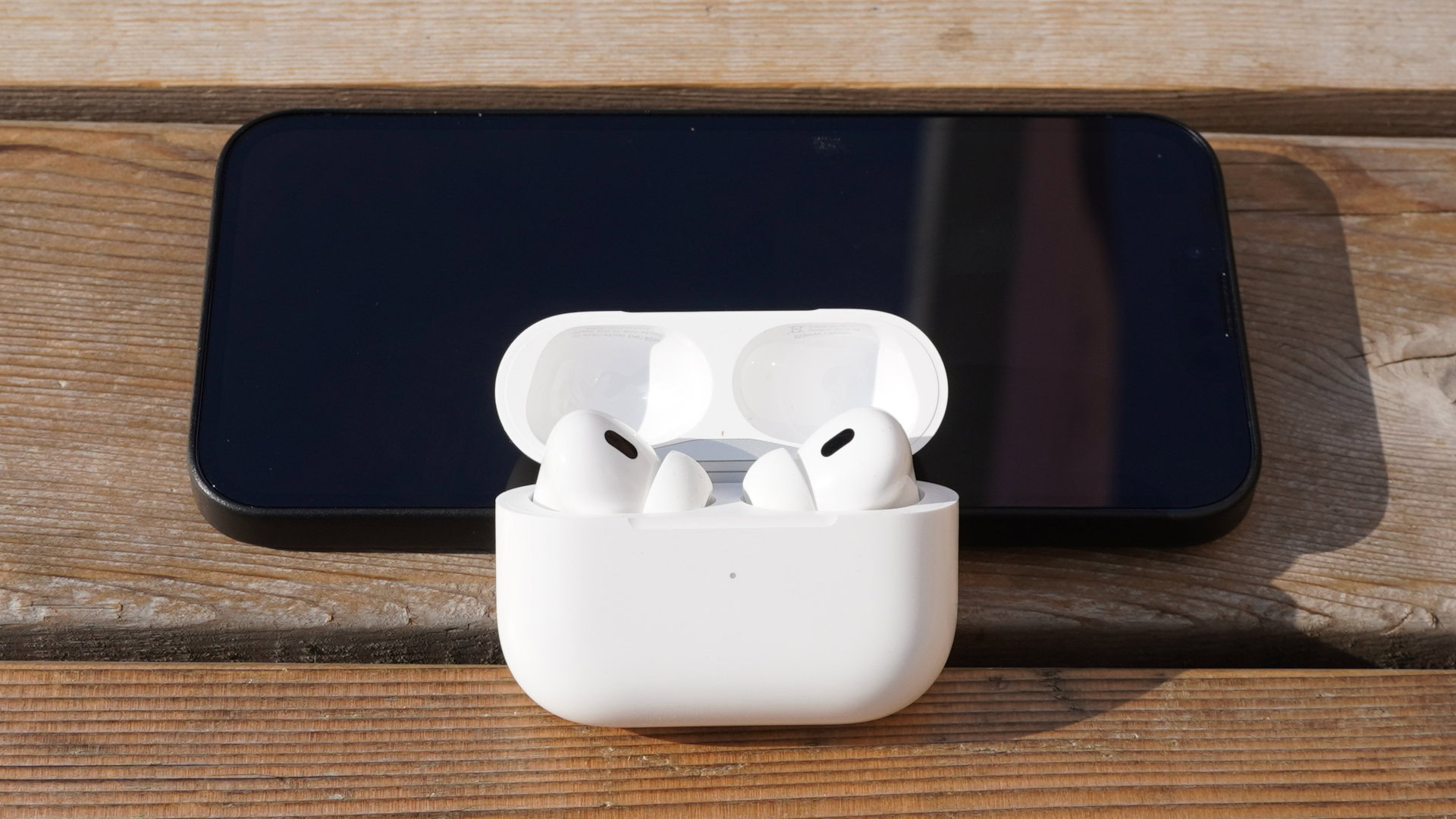
Zak Khan / Android Authority
The AirPods Pro (2nd generation) get an upgrade to Bluetooth 5.3 — a nice but of future-proofing over the first-gen AirPods Pros’ Bluetooth 5.0. That means the new AirPods should support LE Audio down the line, though that’s unconfirmed at the time of this writing. In the meantime, the second-gen AirPods Pro still only support the SBC and AAC Bluetooth codecs. On iOS devices, you’ll enjoy high-quality, low-latency audio. Using the AirPods Pro (2nd generation) on Android is less than ideal, as the optimization isn’t as good.
A further incremental update in the AirPods Pro (2nd generation) is the move from Apple’s custom H1 chip to the H2 chip. According to Apple, it supports “high bandwidth connectivity,” which isn’t quite lossless, but it appears to be getting close.
How to pair AirPods Pro (2nd generation) to an iPhone:
The H2 chip also makes it simple to connect your AirPods Pro (2nd generation) to an iPhone:
- Unlock your iPhone and open Settings.
- Tap Bluetooth and turn it on (it’ll turn green).
- Open the AirPods Pro (2nd generation) case near your iPhone.
- A pop-up will appear where you can tap Connect.
You also get automatic device switching between Apple devices courtesy of the H2 chip. Plus, your AirPods will automatically sync with your iCloud account.
How to pair AirPods Pro (2nd generation) to an Android phone:
Connecting the AirPods Pro (2nd generation) with an Android device is a lot more basic:
- Unlock your Android phone, then go to Settings > Connected Devices > Bluetooth.
- Open the AirPods Pro (2nd generation) case near your phone.
- Press and hold the pairing button on the case and wait for your phone to discover the AirPods Pro (2nd generation).
- Tap on the AirPods Pro (2nd generation) to pair them.
How long does the Apple AirPods Pro (2nd generation) battery last?
Apple claims another benefit of the H2 chip is improved battery life thanks to improved efficiency. Once more, this is a small upgrade, with our tests getting five hours, 43 minutes from the AirPods Pro (2nd generation). That falls just short of Apple’s official claim of six hours, but it is indeed longer than the five hours we got with the first-gen AirPods Pro.
The charging case uses Lightning (a continued annoyance), Qi, MagSafe, or an Apple Watch charging mat to recharge. Using the case, you can get up to 24 hours of listening time, or 19 hours, 30 minutes of talk time. It supports fast charging, too, and you can get 60 minutes of playback time after just five minutes in the case. These are pretty typical values for earbud battery life overall.
In a neat touch, in tandem with an iPhone, the AirPods Pro (2nd generation) can learn your listening habits and only charge to 80% until just before you typically use them. Only then will it will top them up to 100%. This battery health management should help preserve battery life in the long term.
How well do the Apple AirPods Pro (2nd generation) cancel noise?
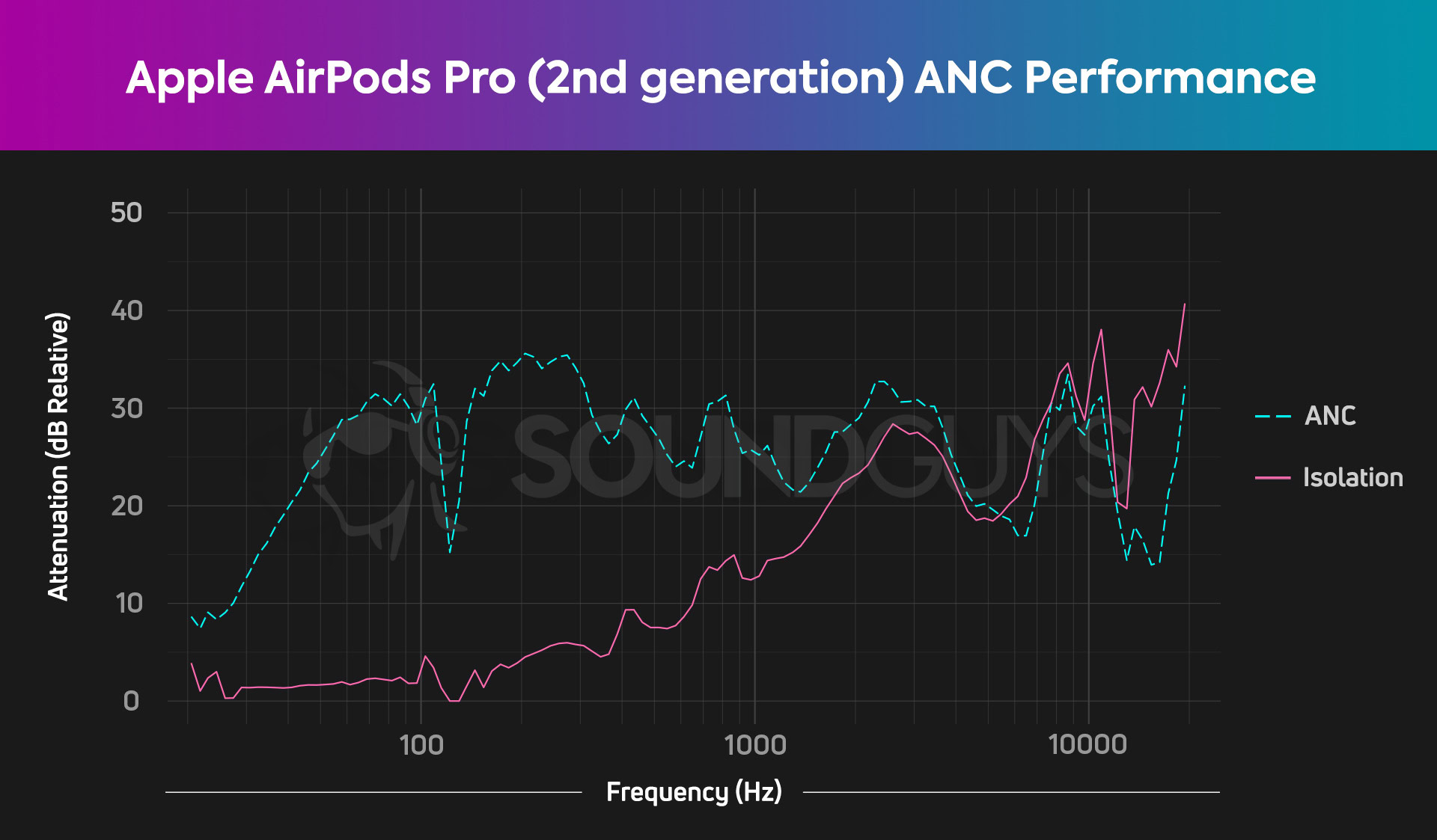
Lily Katz / Android Authority
Perhaps the most significant selling point of the AirPods Pro (2nd generation) and the largest promised upgrade from Apple is better ANC — and they deliver on that promise. As you can see in the chart above, the AirPods Pro (2nd generation) do a great job at handling noise. This kind of performance puts them right up there with the likes of the Samsung Galaxy Buds 2 Pro, and they handily trounce the first-generation AirPods Pro.
As usual, to get the best experience possible, you must find ear tips that fit well. There is an ear tip fit test in iOS to help with this.
Another upgrade Apple touted in its release announcement is Adaptive Transparency, which relies on the H2 chip. When enabled, Adaptive Transparency allows background noises to reach your ears until the earbuds detect harsh, loud noises such as construction work. And it works well in our experience; these sounds are still audible but aren’t nearly as intense.
How good do the Apple AirPods Pro (2nd generation) sound?
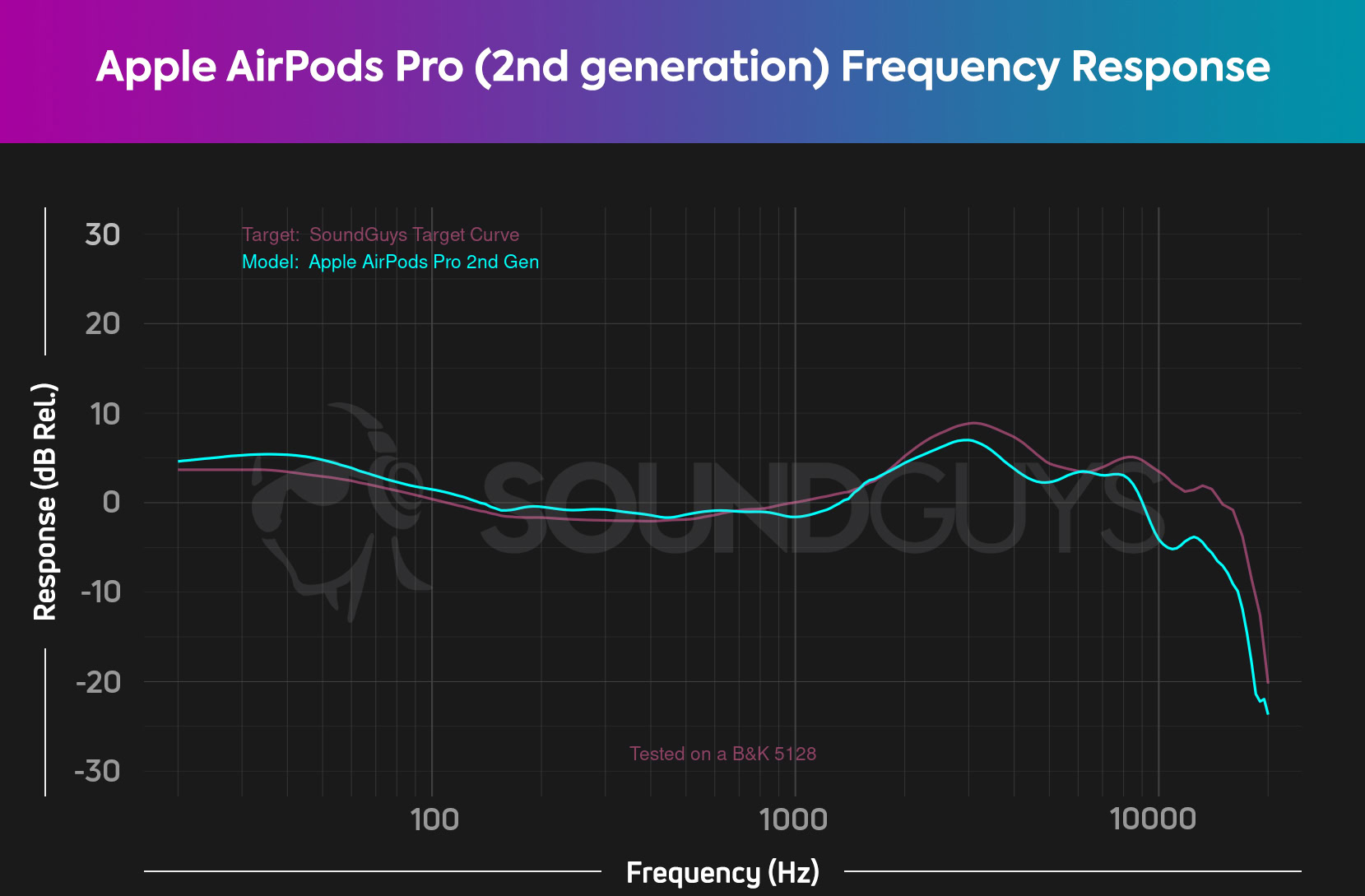
Lily Katz / Android Authority
There are no major upsets regarding the AirPods Pro (2nd generation)’s sound quality. Sure, you can see a slight drop-off in the high notes in the frequency response graph above, but most people won’t mind this.
The buds also benefit from the Adaptive EQ feature (which the first-gen AirPods Pro also have). It is always on and constantly adjusts the earbuds’ sound depending on how they fit, the shape of your ears, and the environment around you.
The AirPods Pro (2nd generation) still sound good, just like their predecessors.
If you really strain to listen, in songs like Harry Styles’ “As It Was,” you can notice that the cymbals are slightly quieter than expected. Still, Styles’ vocals sound great, and so does the guitar. It’s not technically perfect, though you’ll likely only notice if you have sensitive hearing or are in a quiet room. Meanwhile, songs like “Why” by Dominic Fike retain their fun, dancing beats just fine while the vocals come through clear.
Do the AirPods Pro (2nd generation) sound better than the AirPods Pro (1st generation)?
Apple claimed in its press release that the AirPods Pro (2nd generation) have improved sound compared to the AirPods Pro (1st generation). Again, the differences are minor here. though in our tests we noticed a slightly greater bass boost from the second-generation AirPods Pro.
Apple also says a new low-distortion driver and custom amplifier power the AirPods Pro (2nd generation). The newer AirPods Pro definitely do have lower total harmonic distortion, but you likely won’t notice a difference overall.
Note that neither model has a true custom equalizer. Apple Music lets you choose from some presets, but that’s it.
How do you set up Spatial Audio on the AirPods Pro (2nd generation)?
While the announcement of Personalized Spatial Audio came with the release of the AirPods Pro (2nd generation), it’s actually part of the updated standard itself in iOS 16 and above. Therefore, you don’t strictly need the latest AirPods for it to work. You can also use the feature with the AirPods Max and AirPods (3rd generation) along with the first-generation AirPods Pro.
“Personalized” means taking pictures of your ears using the iPhone’s “TrueDepth” camera to optimize the technology for you. That’s similar to what the Sony 360 Reality Audio spatial audio implementation does, too. You will find the option to scan your ears, as seen in the screenshots above, in Settings > AirPods Pro > Personalized Spatial Audio.
Spatial Audio works both with compatible media files and during FaceTime calls. We found the latter a bit disorienting, though your experience may differ.
If you want to try Spatial Audio for yourself, it’s pretty simple to activate:
- Open the Control Center on your iPhone (pull down from the top-right corner).
- Tap and hold the volume control.
- Two options will appear at the bottom of the screen. Tap the right circle for Spatial Audio.
- Supported streaming services using Dolby Atmos, like Apple Music or Tidal, will allow for Spatial Audio, while unsupported services like Spotify get “Spatialize Stereo.” This is a simulated spatial audio effect that won’t be quite the full experience.
- Choose “Off,” “Fixed,” or “Head tracked” to select the type of listening experience you want.
Can you use the Apple AirPods Pro (2nd generation) for phone calls?
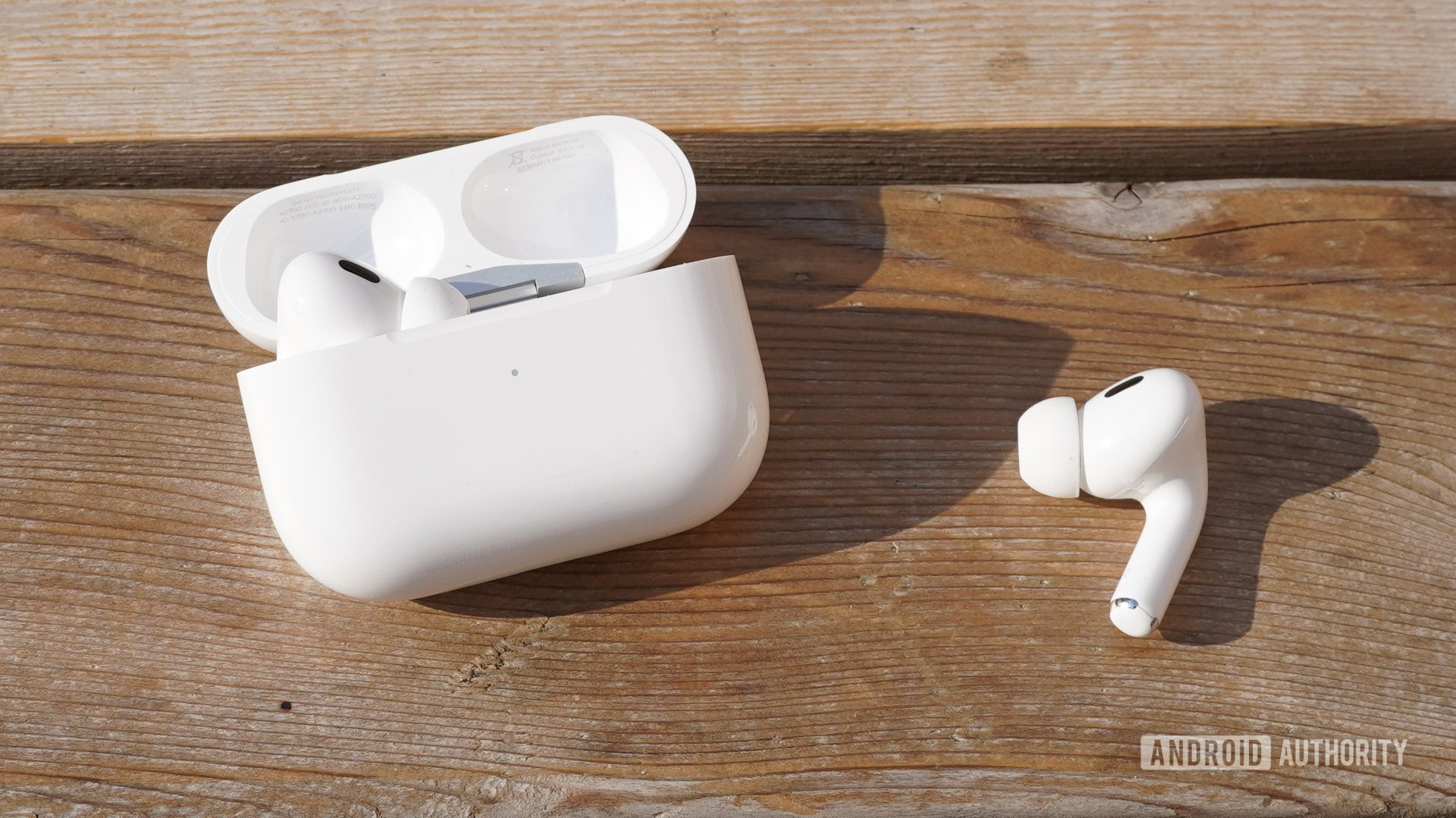
Zak Khan / Android Authority
The microphone array in the AirPods Pro (2nd generation) is a bit of a nuanced change. In ideal conditions, the earbuds do a good job of capturing voices. Things get dicier when wind and other background sounds come into play. As you can hear in our sample recording of “Office conditions” below at around the 0:16 mark, and in the “Windy conditions” recording in general, your voice may get cut out along with the noise.
Apple AirPods Pro (2nd generation) microphone demo (Ideal conditions):
Apple AirPods Pro (2nd generation) microphone demo (Office conditions):
Apple AirPods Pro (2nd generation) microphone demo (Street conditions):
Apple AirPods Pro (2nd generation) microphone demo (Windy conditions):
You can tell us in the poll below what you think of the mic in AirPods Pro (2nd generation).
How does the microphone sound to you?
2 votes
Do the AirPods Pro (2nd generation) have a better mic than the AirPods Pro (1st generation)?
Technically, you get better performance than the AirPods Pro (1st generation). However, you sacrifice accurate voice reproduction to get it. So, the other party in a call may hear less background noise at the expense of hearing less of you. For comparison, you can listen to sample street and office recordings from the first-gen AirPods Pro to hear for yourself.
Apple AirPods Pro (1st generation) microphone demo (Street conditions):
Apple AirPods Pro (1st generation) microphone demo (Windy conditions):
Apple AirPods Pro (2nd generation) review: The verdict
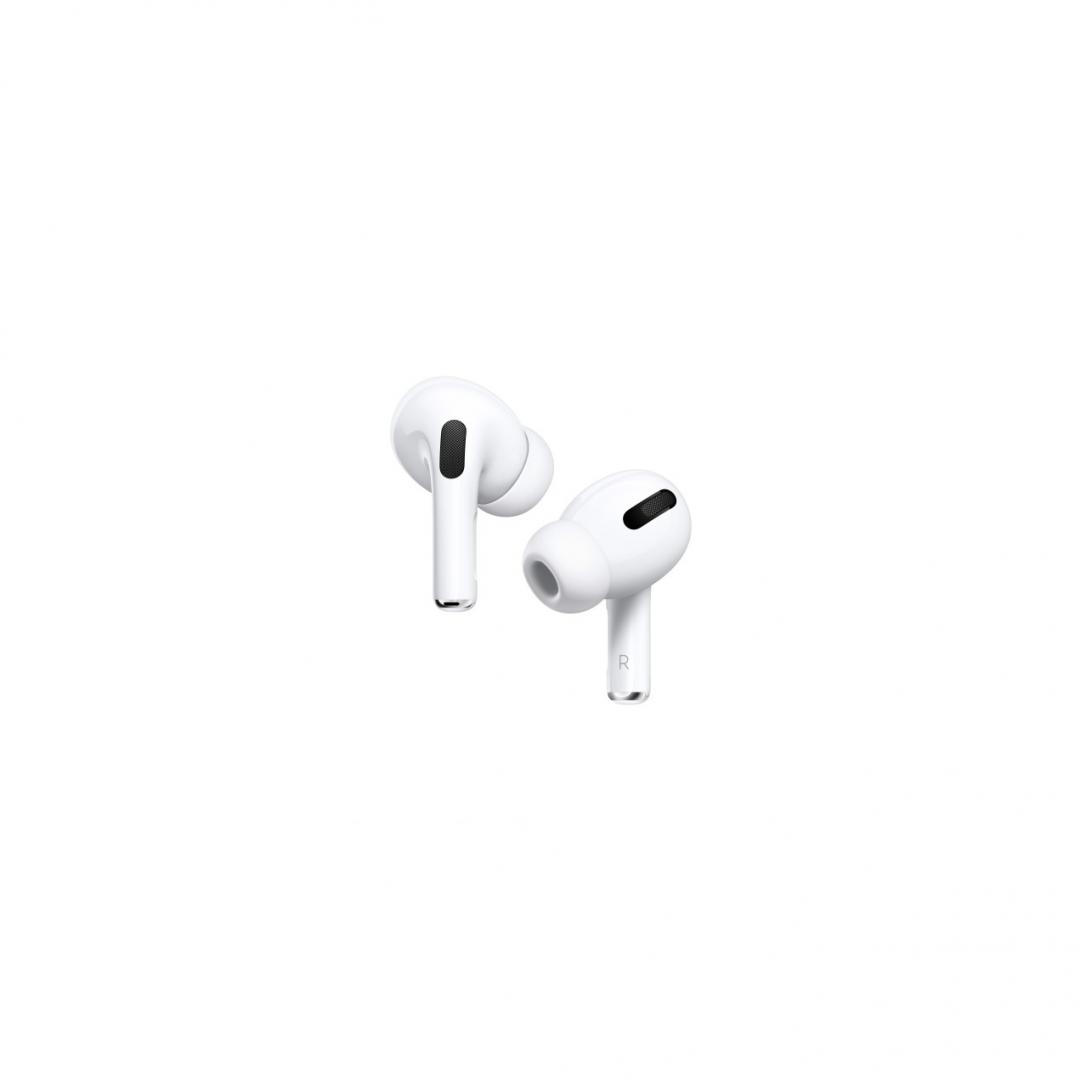
Apple AirPods Pro (2nd Gen.)
Improved ANC • Various ear tips • Decent battery
Better ANC and battery life for the AirPods Pro 2nd generation.
The second generation of AirPods Pro earbuds perform better than the first version. Apple improved the active noise canceling, and the last SoC brings new and upgraded features.
While the updates to the AirPods Pro (2nd generation) are mostly incremental, they add up to ensure the second-gen AirPods Pro are worth successors. Most notably, the ANC is better than the first gen buds, which is easily their biggest draw. If you own an iPhone and haven’t got a pair of earbuds, then the AirPods Pro (2nd generation) will slide into your life nicely and sync beautifully with the rest of the Apple ecosystem.
The AirPods Pro (2nd generation) make minor but welcome changes to the AirPods Pro formula.
Still, the first-generation AirPods Pro aren’t obsolete. Apple may not directly sell them anymore, but you can find them at a discount on places like Amazon. And if you already own a pair, you’ll still get many of the same features via software updates, such as Personalized Spatial Audio and battery life optimization. You’ll just have to live with worse active noise-cancelling.
How do the Apple AirPods Pro (2nd generation) compare to other AirPods?
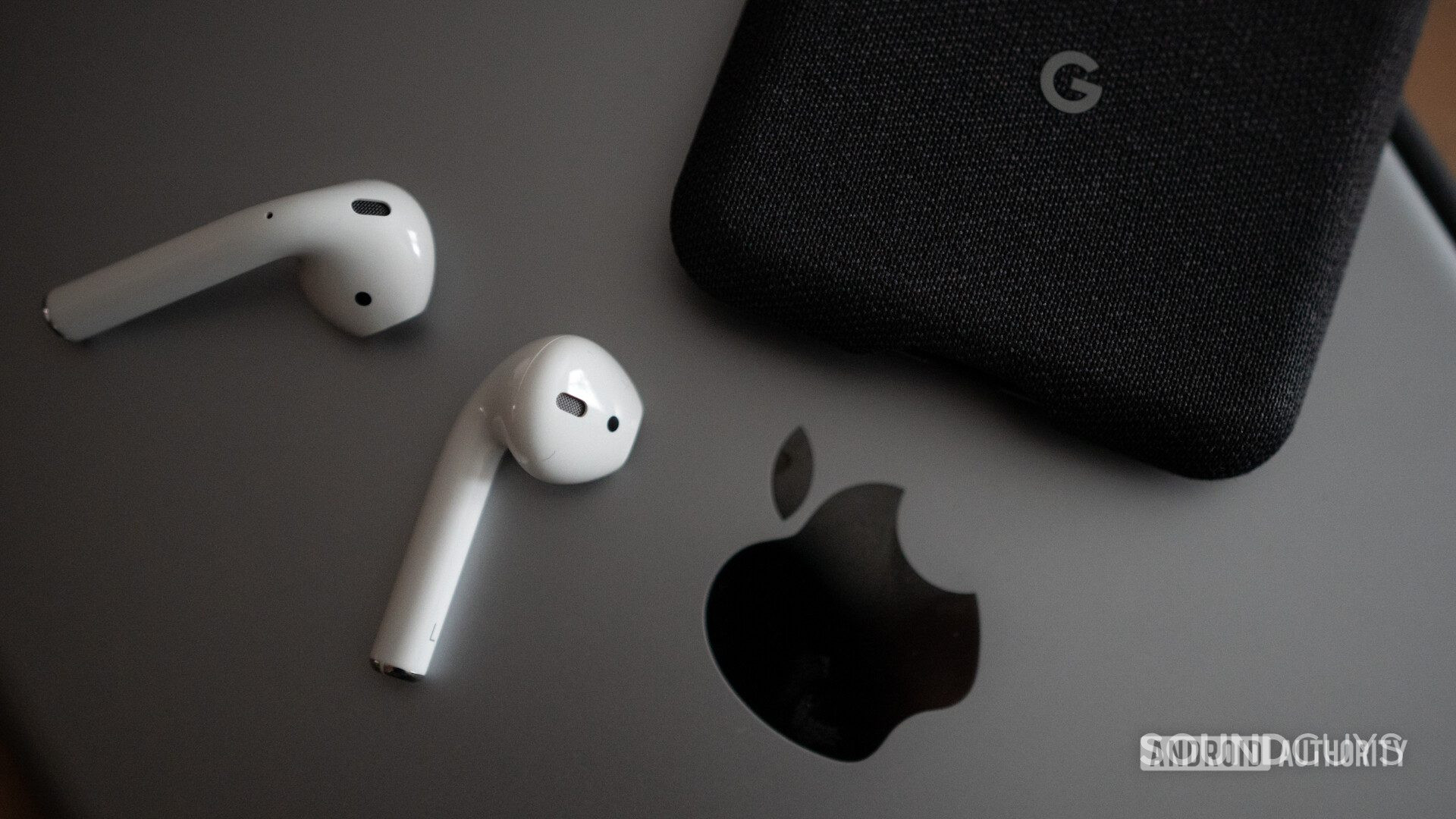
Zak Khan / Android Authority
As you’ve likely gathered, the first- and second-generation AirPods Pro are pretty similar. The second-generation AirPods Pro give you better ANC and the H2 and U1 chips, along with the “high-excursion Apple driver.” The charging case is also different, with a small speaker and a lanyard loop to help you find it. In contrast, the second– and third-generation non-pro AirPods earbuds don’t seal to your ears. That means external noises could impact your listening experience. Below is a chart to help you see all these differences side-by-side, or check out our in-depth comparison between the third-gen AirPods and second-gen AirPods Pro for more info:
| Apple AirPods (1st generation) | Apple AirPods (2nd generation) | Apple AirPods (3rd generation) | Apple AirPods Pro (1st generation) | Apple AirPods Pro (2nd generation) | |
|---|---|---|---|---|---|
|
Size (earbud) |
Apple AirPods (1st generation)
40.5 x 16.5 x 18 mm |
Apple AirPods (2nd generation)
40.5 x 16.5 x 18 mm |
Apple AirPods (3rd generation)
30.8 x 18.3 x 19.2 mm |
Apple AirPods Pro (1st generation)
30.9 x 21.8 x 24 mm |
Apple AirPods Pro (2nd generation)
30.9 x 21.8 x 24 mm |
|
Weight (earbud) |
Apple AirPods (1st generation)
4g |
Apple AirPods (2nd generation)
4g |
Apple AirPods (3rd generation)
4.3g |
Apple AirPods Pro (1st generation)
5.4g |
Apple AirPods Pro (2nd generation)
5.3g |
|
Size (case) |
Apple AirPods (1st generation)
44.3 x 21.3 x 53.5 mm |
Apple AirPods (2nd generation)
44.3 x 21.3 x 53.5 mm |
Apple AirPods (3rd generation)
46.4 x 21.4 x 54.4 mm |
Apple AirPods Pro (1st generation)
45.2 x 60.6 x 21.7 mm |
Apple AirPods Pro (2nd generation)
45.2 x 60.6 x 21.7 mm |
|
IP certification (buds) |
Apple AirPods (1st generation)
N/A |
Apple AirPods (2nd generation)
N/A |
Apple AirPods (3rd generation)
IPX4 |
Apple AirPods Pro (1st generation)
IPX4 |
Apple AirPods Pro (2nd generation)
IPX4 |
|
Fit type |
Apple AirPods (1st generation)
Open |
Apple AirPods (2nd generation)
Open |
Apple AirPods (3rd generation)
Open |
Apple AirPods Pro (1st generation)
Sealed (three ear tip sizes) |
Apple AirPods Pro (2nd generation)
Sealed (four ear tip sizes) |
|
Bluetooth |
Apple AirPods (1st generation)
SBC, AAC; Bluetooth 4.2 |
Apple AirPods (2nd generation)
SBC, AAC; Bluetooth 5.0 |
Apple AirPods (3rd generation)
SBC, AAC; Bluetooth 5.0 |
Apple AirPods Pro (1st generation)
SBC, AAC; Bluetooth 5.0 |
Apple AirPods Pro (2nd generation)
SBC, AAC; Bluetooth 5.3 |
|
Active noise cancellation |
Apple AirPods (1st generation)
No |
Apple AirPods (2nd generation)
No |
Apple AirPods (3rd generation)
No |
Apple AirPods Pro (1st generation)
Hybrid ANC |
Apple AirPods Pro (2nd generation)
Hybrid ANC |
|
Wireless charging available? |
Apple AirPods (1st generation)
No |
Apple AirPods (2nd generation)
Yes, with wireless charging case |
Apple AirPods (3rd generation)
Yes, compatible with Qi and MagSafe, |
Apple AirPods Pro (1st generation)
Yes, compatible with Qi and MagSafe (2021) |
Apple AirPods Pro (2nd generation)
Yes, compatible with Qi, MagSafe, and Apple Watch chargers |
|
Chipset |
Apple AirPods (1st generation)
W1 |
Apple AirPods (2nd generation)
H1 |
Apple AirPods (3rd generation)
H1 |
Apple AirPods Pro (1st generation)
H1 |
Apple AirPods Pro (2nd generation)
H2 (earbuds) |
|
Touch controls |
Apple AirPods (1st generation)
Yes |
Apple AirPods (2nd generation)
Yes |
Apple AirPods (3rd generation)
Yes, with force sensor |
Apple AirPods Pro (1st generation)
Yes, with force sensor |
Apple AirPods Pro (2nd generation)
Yes, with force sensor and swipes |
|
Connector |
Apple AirPods (1st generation)
Lightning |
Apple AirPods (2nd generation)
Lightning |
Apple AirPods (3rd generation)
Lightning |
Apple AirPods Pro (1st generation)
Lightning |
Apple AirPods Pro (2nd generation)
Lightning |
|
Battery life (75dB SPL) |
Apple AirPods (1st generation)
3.45 hours |
Apple AirPods (2nd generation)
4.175 hours |
Apple AirPods (3rd generation)
6.35 hours |
Apple AirPods Pro (1st generation)
5.1125 hours |
Apple AirPods Pro (2nd generation)
TBD |
|
Original price (USD) |
Apple AirPods (1st generation)
(Discontinued) |
Apple AirPods (2nd generation)
$159 USD, $199 USD with wireless charging case |
Apple AirPods (3rd generation)
$179 USD |
Apple AirPods Pro (1st generation)
$249 USD |
Apple AirPods Pro (2nd generation)
$249 USD |
Are the Beats Fit Pro better than the Apple AirPods Pro (2nd generation)?
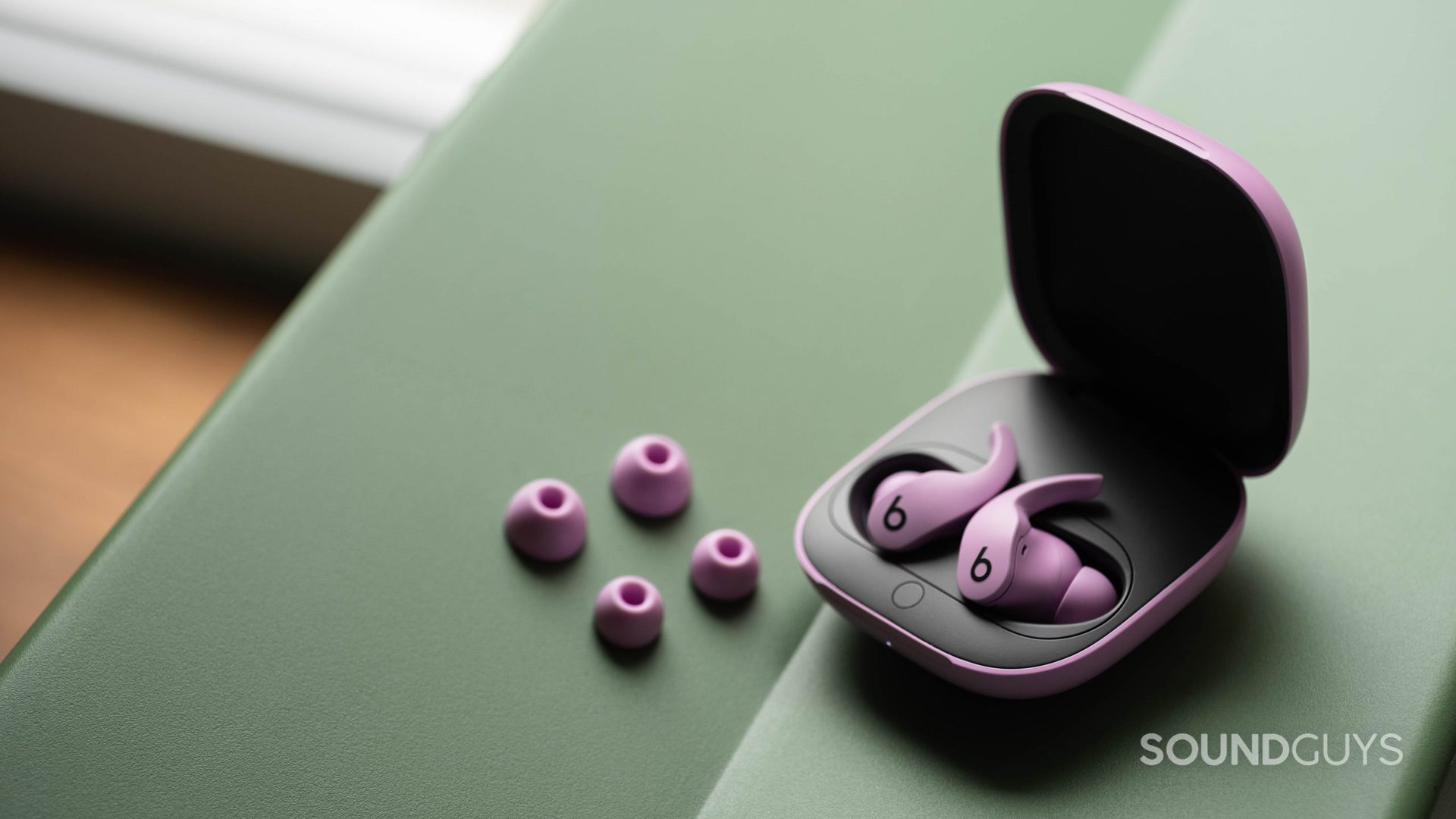
Lily Katz / Android Authority
The Beats Fit Pro ($199), from Apple’s other brand of earbuds, aim for a slightly different market. The Beats Fit Pro come in at under $200 — $50 less than the AirPods Pro (2nd generation). Gym rats will appreciate their hooked design and the Beats Fit Pro play much more nicely with Android phones.
As for sound, the Beats Fit Pro amp up bass notes slightly more than the AirPods Pro (2nd generation). That makes sense given they’re workout earbuds, though both have the same drop-off in treble notes.
The AirPods Pro (2nd generation) have slightly better and more consistent ANC than the Beats Fit Pro, but both are quite good performers in this regard. The Beats Fit Pro also have Personalized Spatial Audio on iOS 16 and above, in-ear detection, and an IPX4 rating. But only the AirPods Pro (2nd generation) have an IPX4-rated case.
What are the best Apple AirPods Pro (2nd generation) alternatives?
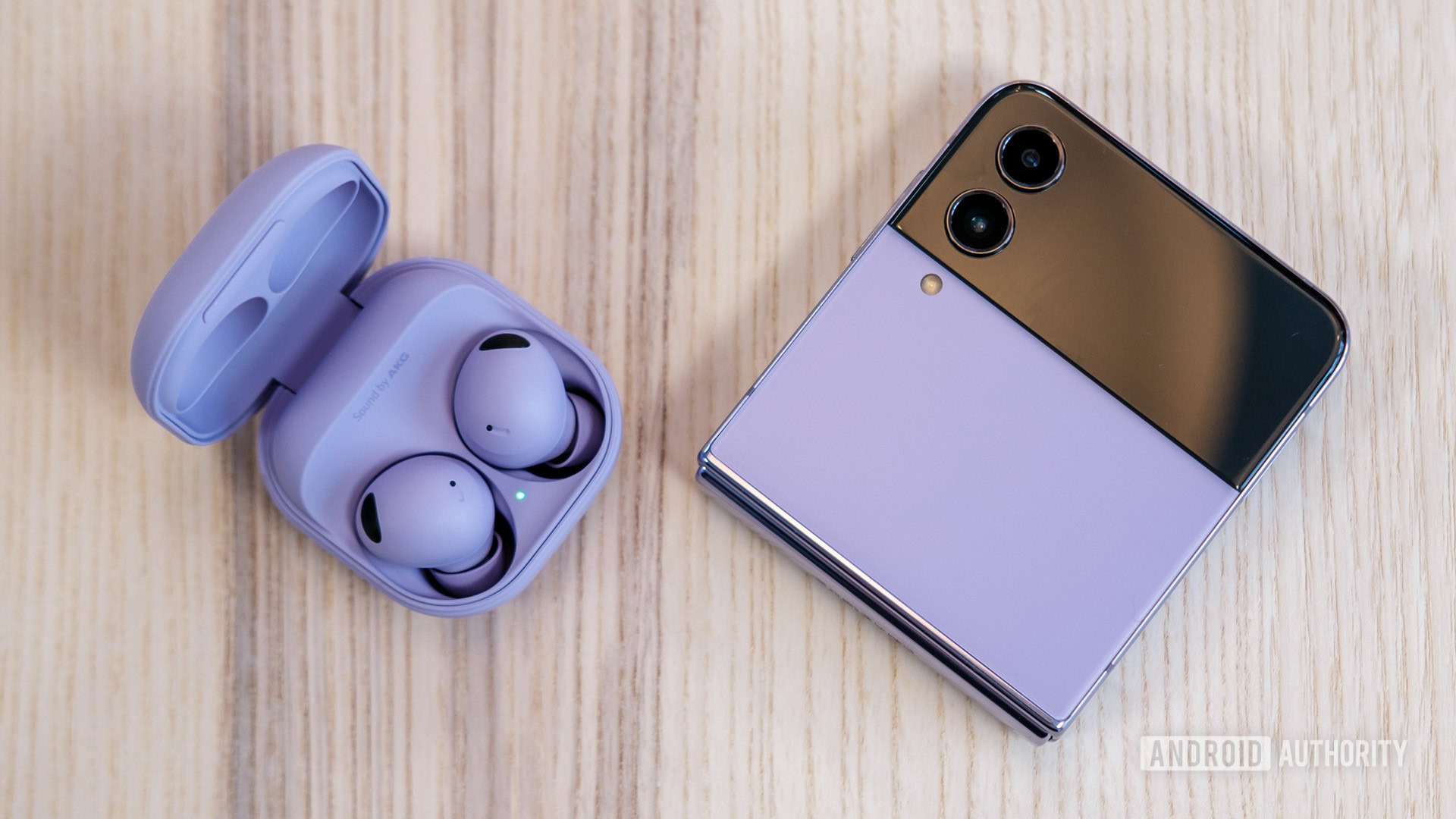
Robert Triggs / Android Authority
After looking at all the updates to the AirPods Pro (2nd generation), you might decide they aren’t for you — especially if you’re an Android user. That’s no big deal; there are lots of other options.
There’s always the long-reigning monarch of ANC earbuds, the Sony WF-1000XM4 ($279), if you want comparable noise-cancelling, comfort, and build quality. Plus, the Sony Headphone Connect app works on both iOS and Android, and the earbuds support the LDAC, AAC, and SBC Bluetooth codecs. They do cost around $30 more than the AirPods Pro (2nd generation), but you can often find them on sale for less than Apple’s buds. You can try the Sony Linkbuds S ($179) if the XM4s are too pricey.
Android users have their own platform-tailored options, too. The Google Pixel Buds Pro ($199) are less than $200 and give you tight smartphone integration with Google Assistant support. They also have a water-resistant case and earbuds, much like the AirPods Pro (2nd generation). Their ANC is quite good, plus you get Bluetooth multipoint.
We’d be remiss to omit the other big walled garden: Samsung. The Galaxy Buds 2 Pro ($229) have some of the best ANC around these days, and everyone from commuters to workers and casual listeners will appreciate it. They are a bit more bass boosted than we’d like, but not by a lot. And you get all sorts of bells and whistles just like the AirPods Pro (2nd generation), including spatial audio and automatic device switching — as long as you have a Samsung device.
Top Apple AirPods Pro (2nd generation) questions and answers
Yes, as long as you have an Apple Music account. To use spatial audio with an Android phone, do the following:
- Open the Apple Music app.
- Tap More (three vertical dots).
- Tap on the Settings tab.
- Toggle Dolby Atmos on.
The AirPods Pro (2nd generation) have some accessibility features. “Conversation Boost” can amplify voices in front of you, while “Headphone Accommodations” can amplify certain frequencies to help you hear more clearly. And “Live Listen” can help you hear someone speaking in an auditorium for class lectures or work conferences. You will need an iPhone to use these features.
Apple offers six free months of Apple Music when you buy AirPods, a HomePod Mini, or specific Beats headsets. This only applies to new subscribers.
Here’s a list of devices eligible for six free months of Apple Music upon purchase:
- AirPods Pro series
- AirPods (2nd and 3rd generation)
- AirPods Max
- HomePod
- HomePod mini
- Beats Fit Pro
- Beats Studio Buds
- Beats Powerbeats
- Beats Powerbeats Pro
- Beats Solo Pro
No, but they are water resistant with an IPX4 rating. That means they should withstand light contact with water, such as drips and splashes.
For all the latest Technology News Click Here
For the latest news and updates, follow us on Google News.
